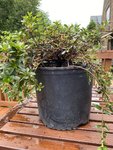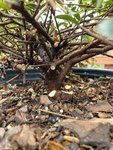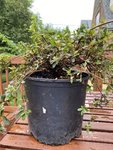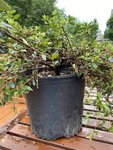Kanorin
Omono
Good, because the other trunk is in the yard waste bag!@Kanorin
Even from your less than idea photos, I actually think this second azalea has potential. The thicker of the 2 trunks is the one that I would keep.
Arbitrary front

From 3 feet back

Rotate ~90 degrees

From 3 feet back

Rotate ~90 degrees

Rotate ~90 degrees

From 3 feet back






